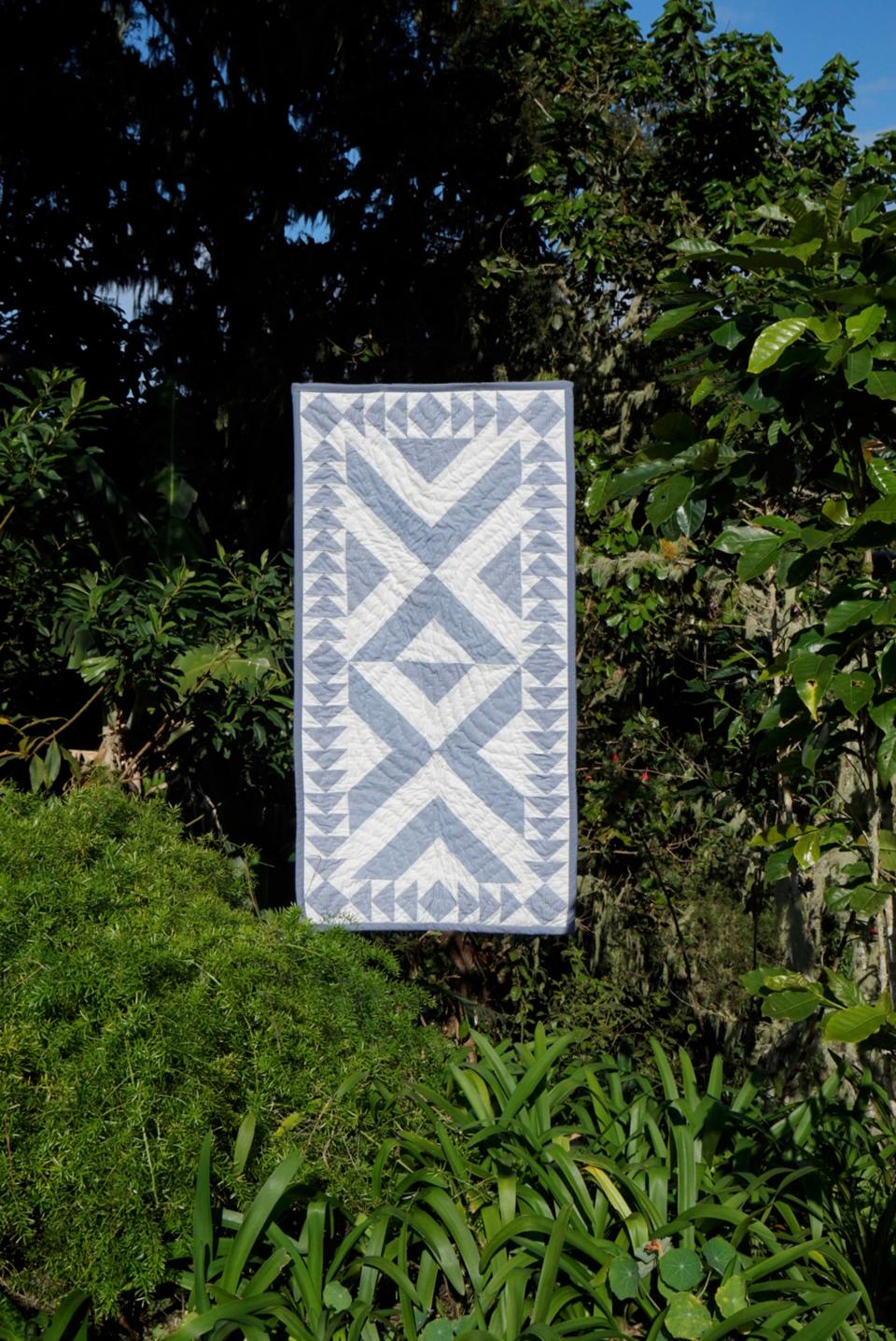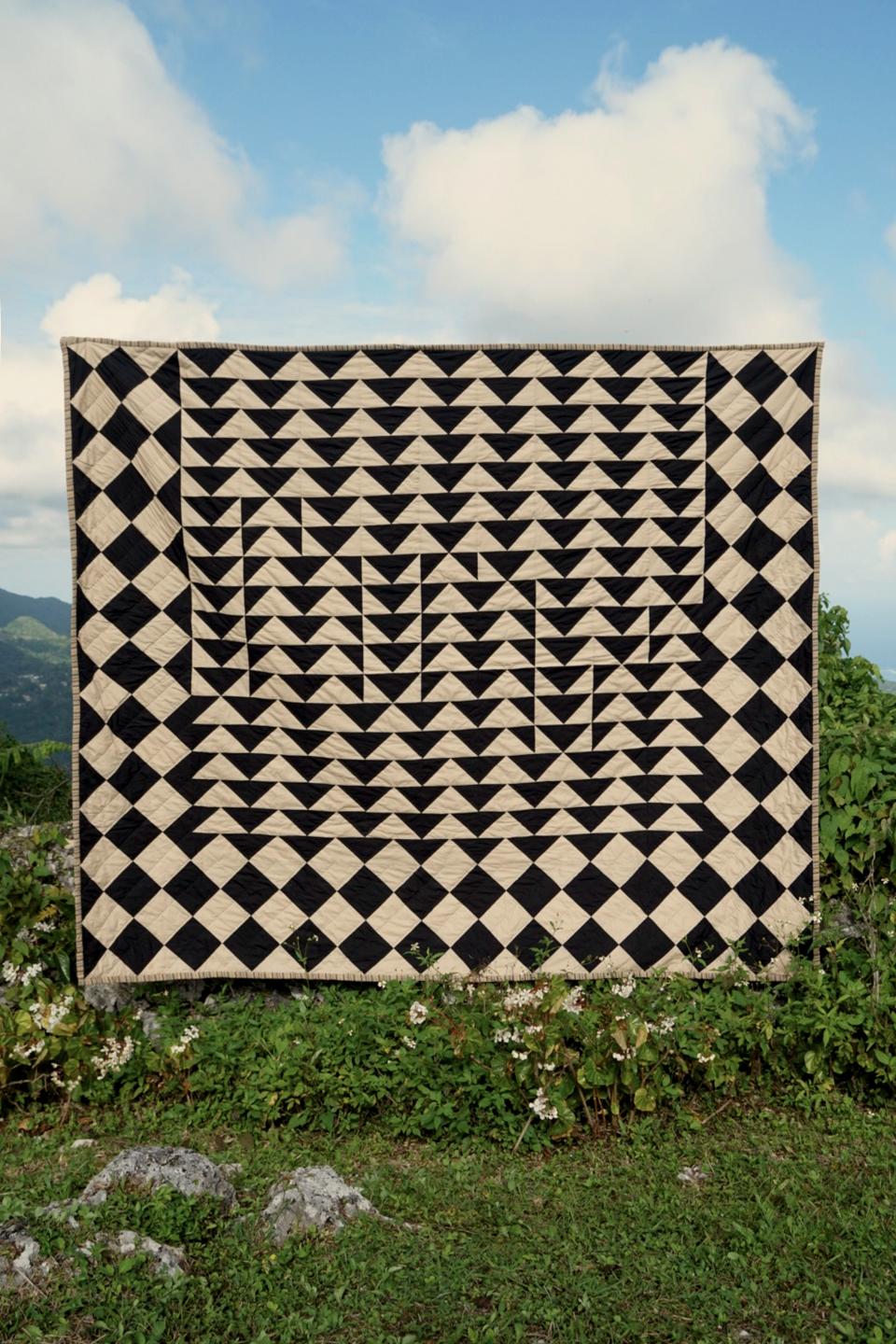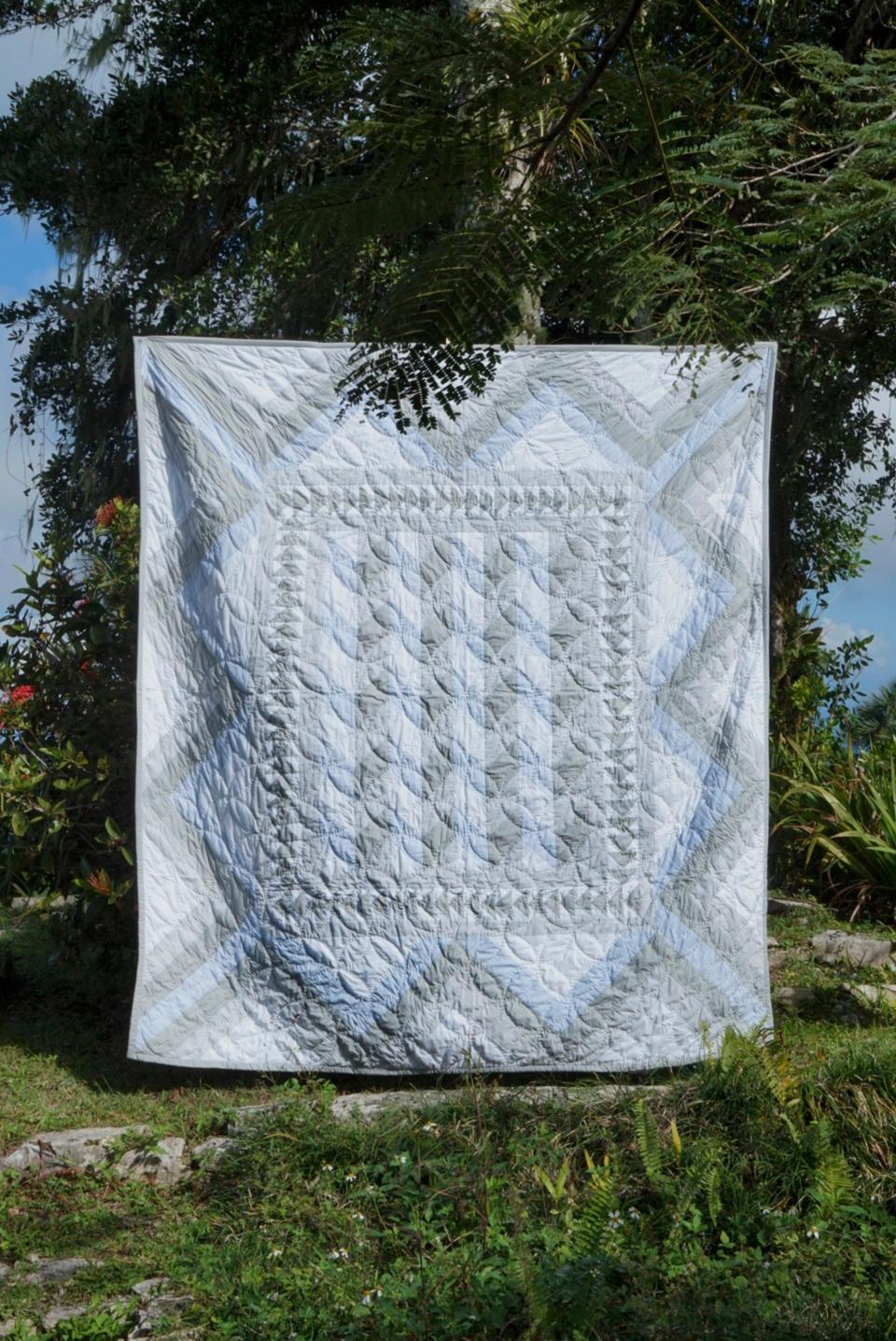Jessica Ogden’s Latest Quilts for A.P.C. Continue to Make Use of Fashionable Surplus Fabrics
Jessica Ogden first started collaborating with A.P.C. to produce quilts in 2010. Flash forward almost a decade, and her latest upcoming collection, which will be available in stores and online starting April 25, is as resplendent as ever. To photograph the quilts and patchwork cushions included in the new grouping, Ogden and photographer Alfredo Piola climbed to top of Blue Mountain Peak—Jamaica’s highest mountain. Ogden, who has set up camp in Paris by way of Britain, was born in Jamaica and frequently draws upon the island nation for inspiration. But these latest works, which are part of a collection dubbed Round 16, continue to prove that traditional American quilting techniques are an added fount of inspiration for both Ogden and the brand. (As a graduate of the Rhode Island School of Design, Ogden has also spent time living in the U.S.)

"The making of quilts stemmed from my use of antique quilts for 'one-offs' in my own collections," Ogden tells AD PRO. Her past work, which included fashion designs of her own, was known to incorporate "layering, destroying, then patching." Naturally, this ongoing work with A.P.C. wasn't a far cry from her signature mishmash of references and materials. Ogden does, however, credit A.P.C. founder Jean Touitou with the initial idea, which the designer conceptualized as a way to use his 30 years' worth of surplus fabrics. "[Jean] had the idea because when he was working for Kenzo, before A.P.C., he was given piles of scrap fabrics, which his mum remade into a beautiful quilt," Ogden explains. "When he thought to do the same for A.P.C., he asked me, as he knew of my previous work."

Ogden describes her quilt-design process in general as being a "revelatory" experience. That idea resonates further with this collection's musical notes: While the pillows were named after Italian terms such as Crescendo, the quilts' monikers are meant to sound as if they are classical pieces of music. Speaking, however, of the nature of quilt designing when contrasted with that of fashion, Ogden says, "There are crossovers, but this is more akin to painting with cloth. It all starts with the fabrics. I have swatches of the surplus fabrics—some that are five meters and some that 100—so I need to be mindful of this when creating the quilts." Adding that only 30 versions of each individual quilt are ultimately made, Ogden explains, "I need to make sure there is enough of each fabric in order to make the quantity of quilts required. So, for instance, the cloth with only five meters has to be a small patch that can stretch to cover all the quilts I do." Despite the fact that this sourcing method can lead to beautiful bouts of serendipity, it can also be a double-edged sword. "You fall in love with one, but when it’s finished, it’s gone."
The trace of handwork can be seen in many aspects of these new quilts. Ogden and A.P.C. produce the quilts in a small workshop in India, whose owner was trained in American quilting techniques. "[My] drawings are all manual, not transferred with a computer program," Ogden explains of her own sketches. "There are sometimes surprises with the first sample," she adds. "But we have now formed a language where we understand each other through the drawings. It's a very unique process."

For Ogden, it's clear that the collaboration continues to be a fruitful and intellectually stimulating project. Its recycling and upcycling methods also resonate with her. "In fact, [that] is how I started in fashion," Ogden says. "I volunteered for Oxfam for their No Logo project, where we used the ends of rolls of fabrics to produce garments. The project with A.P.C. is a small one, but I hope that its intentions and effects are far reaching."

